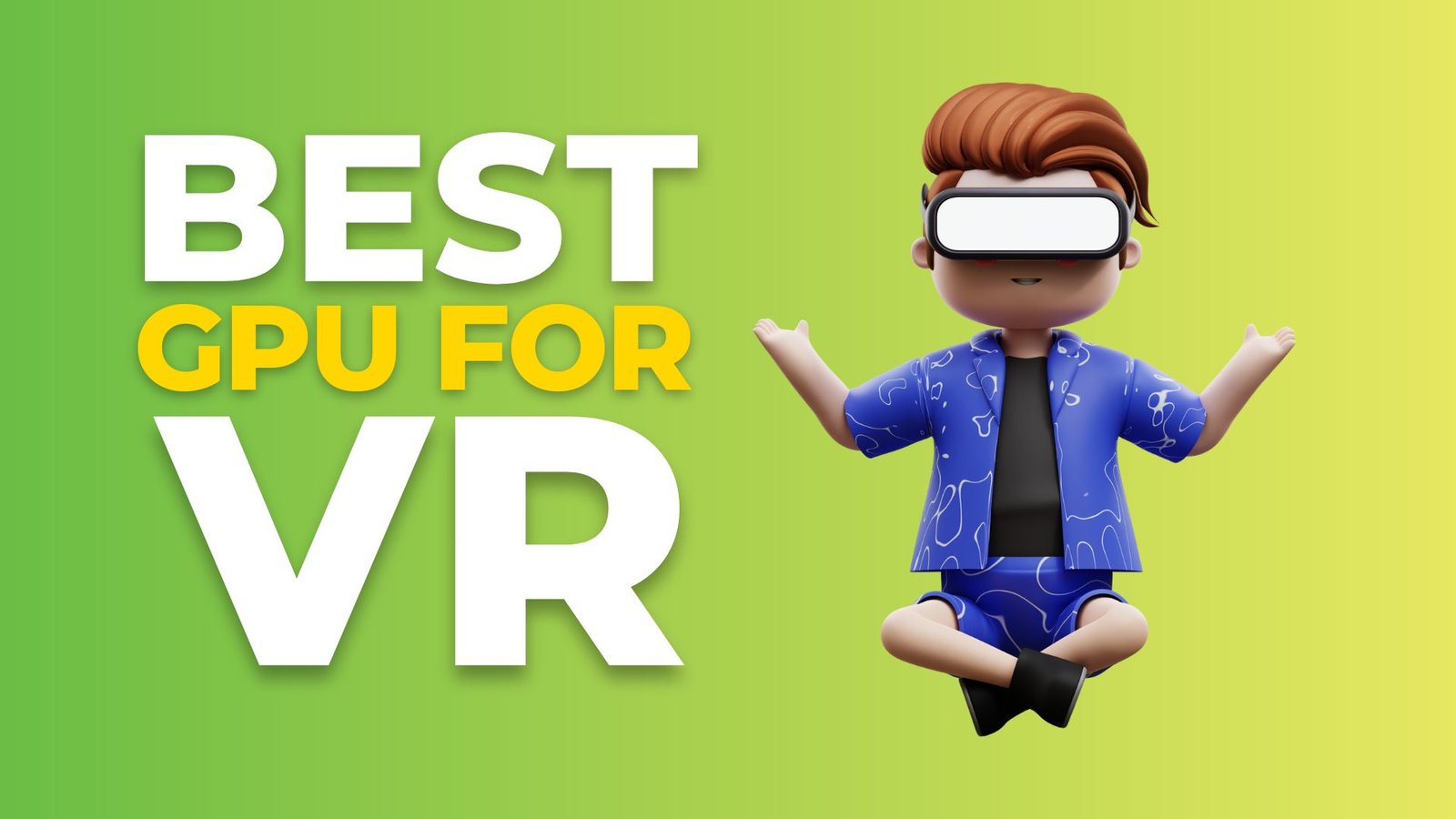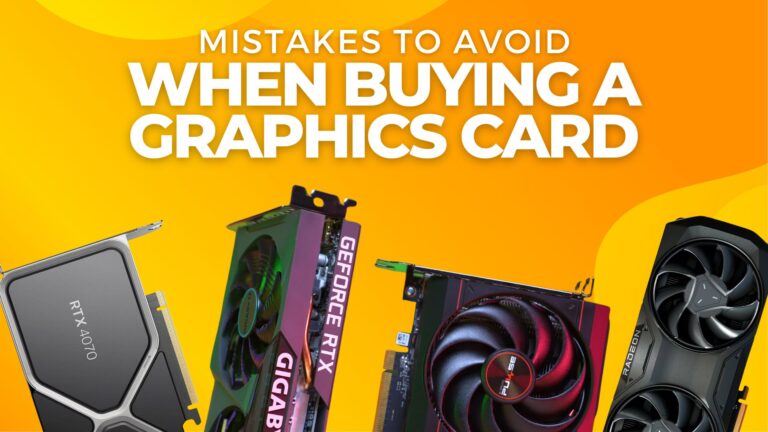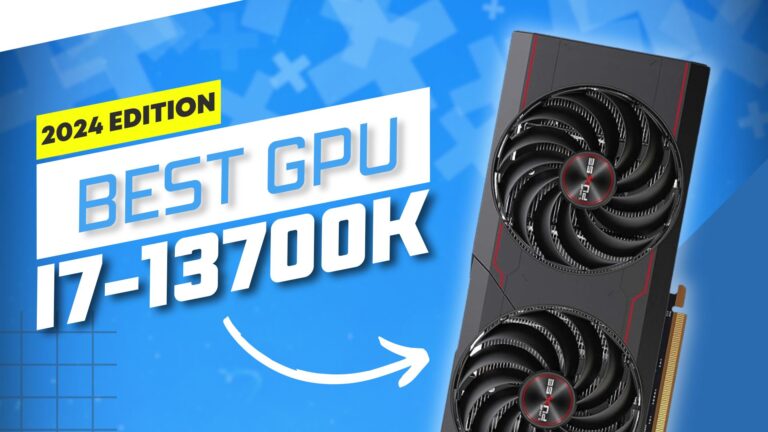Let’s admit that gaming on Virtual Reality takes the whole experience to the next level. You can’t compare it to regular gaming because it feels so surreal. With advancements in artificial intelligence and technology overall, everything is rapidly changing and making our lives even more entertaining. Now, the point here is that you need sufficient enough hardware to handle such kind of real stuff.
The first thing that pops up in the brain if you think about VR gaming is the Graphics Card. GPU is the backbone of all the visual stuff that happens in games, and to be honest, there are tons of options out there right now when it comes to buying the right one for you. However, it isn’t much difficult if you know what works best for the hardware you’re trying to build. Also, if you’re a newbie, the one most important thing you need to keep in mind is that a Graphics Card for VR gaming doesn’t come cheap.
The most vital part of building your dream machine is finding the right hardware for it that settles in nicely with each other as well. The essential components of a custom PC have to be the CPU (the brain of your device), the motherboard (the foundation), and the GPU (Graphics Processing Unit). If you’re specifically building a machine for gaming, then definitely, a wrong decision regarding Graphics Card can make you regret in the long run.
Best Graphics Cards for VR 2023
| Nvidia GeForce RTX 2080Ti Founders Edition | Check Price |
| ASUS ROG Strix RTX 2080Ti | Check Price |
| AMD Radeon RX 5700 XT | Check Price |
| MSI GeForce Gaming RTX 2060 | Check Price |
| XFX AMD Radeon RX 590 Fatboy | Check Price |
| Nvidia GeForce RTX 2080 Super | Check Price |
| Gigabyte GeForce RTX 2070 Super | Check Price |
| MSI Radeon RX 5700 GAMING X | Check Price |
| ZOTAC Gaming GeForce GTX 1660Ti | Check Price |
| MSI GeForce GTX 1660 TI Gaming X | Check Price |
| MSI GeForce RTX 2060 Ventus OC Edition | Check Price |
Best Graphics Cards for VR 2023 Reviews
To get you out of this dilemma, we’re giving you a list of 11 Best Graphics Card for VR in this article that you can buy and rely on them in the long run as well.
1. Nvidia GeForce RTX 2080Ti Founders Edition
The first video card on our list of Best Graphics Card for VR is the Nvidia GeForce RTX 2080Ti Founders Edition. This card comes at a hefty price tag of more than one thousand bucks. Investing such kind of money on a Graphics Card alone isn’t everyone’s piece of cake; however, if you want to enjoy Virtual Reality games, then you won’t regret spending this much money. The card offers 4352 CUDA cores in total, while the memory speed you’re getting is 14GBps.

Furthermore, you get a base clock of 1350, while the boost clock can go up to 1635, which is going to give you reliable performance. You get a total memory or VRAM of 11GB with the latest GDDR6 technology in place. If you talk about the dimensions of the card, it is going to take two slots on your motherboard, and the exact width and length are 4.5×10.5. Moreover, the power requirement of this card while running is 260W, and you get 8+8 power connectors on the back panel to juice this thing up as well.
In a nutshell, the card is offering a complete package and can match your VR unique PC perfectly. The aesthetics of this card are also worth mentioning, and they are going to add an exclusive look to your PC.
Pros
- Smoothly runs even on extreme gaming sessions.
- Overclocking is the specialty.
- Perfect for long term.
Cons
- Costly than other options.
2. ASUS ROG Strix RTX 2080Ti
The next card on our list is the ASUS ROG Strix RTX 2080Ti, and this one has stunning looks as well as performance capabilities. It comes in the 2.7 slot design, which makes it a bit longer than the others, and it might not be feasible for all cases. However, it offers killer features. It comes with a video memory of 11GB, and just like the previous card on this list, this one too has a GDDR6 one.

The base clock you get on average usage of the card is 1350mhz, while if you like pushing your machine to new limits, the card has a boost clock frequency of 1665mhz. Moreover, the CUDA cores you’re getting on this one are around 4352, and the memory interface you have here is 352-bit. The dimensions of the device are 12×5″ more or less, and the PSU recommendation you get with this card is 650W.
There are two 8-pin ports on the back panel, which handle the power segment and are more than enough. Also, you get two HDMI ports and two Display ports as well. Overall, this video card is a solid buy but could’ve been a little less expensive than the offering price.
Pros
- Three-fan design.
- Plenty of CUDA cores.
- RGB lights.
Cons
- A little expensive.
- Might now fit all cases.
3. AMD Radeon RX 5700 XT
The AMD Radeon RX 5700 XT uses the RDNA architecture and comes at a low price-tag as well. However, you can still enjoy a good VR session on this card. There’s a regular RX 5700 version of it as well, but this one outperforms it and is much reliable. If you compare the new design of this one, the power consumption and overall performance efficiency have gone up by a fair margin on this card than its predecessors.

You get the compute units in all the AMD video cards, and they are equivalent to CUDA cores of Nvidia. This mid-ranger is packing around 40 compute units, which are quite compelling. Moreover, the base frequency on this card is 1605mhz, while the boost clock frequency goes up to 1905mhz. The power requirement of this device is 225W, which is a lot less than the rest of its rivals.
Furthermore, you get a total VRAM of 8GB, with memory type being GDDR6. For enthusiasts that like wondering about the nitty-gritty of the device, the memory interface this piece of hardware is packing is the 256-bit one. Last but not least, you get a memory speed of 14GBps on this card.
Pros
- Value for money.
- Compelling features in low-budget.
Cons
- Makes a loud noise.
4. MSI GeForce Gaming RTX 2060
MSI is known for their top of the line hardware components nowadays, and they have been able to introduce great GPUs as well. The GeForce Gaming RTX 2060 provides a lot of useful features that you can advantage of if you’re looking to build the best VR gaming PC. The main advantage you have here is that you can install the other MSI parts as well that will sit perfectly with this mid-ranger.

The card is offering a boost clock of 1830mhz, which is very impressive considering the price range of this piece of hardware. Also, you have the memory speed that goes up to 14GBps, and will help boost the overall performance of your machine. The total VRAM you’re getting on this device is 6GB with GDDR6 technology. Now, you may find the video memory to be a bit low; however, it will handle most games just fine.
The get 3×Display ports at the back panel, which are more than enough. However, for some reason, they are only giving one HDMI port. Moreover, the card offers Mystic Light support, and you can choose between millions of color combinations to illuminate this thing according to your taste. The power consumption requirement is 190W, while you only get one 8-pin power connector on the device.
Pros
- Great Boost clock.
- 3×Display ports.
- RGB Mystic Light support.
Cons
- Only one HDMI slot.
- 6GB VRAM.
5. XFX AMD Radeon RX 590 Fatboy
It’s a well-known fact that not everyone can afford to buy top-notch devices to build a machine of their taste. The price of most top-notch video cards exceeds more than a thousand dollars, while you can quickly build a good PC in that price tag. AMD has always been known as a budget king in the market, and there’s no doubt in that as well.

The XFX AMD Radeon RX 590 Fatboy is a stunning addition on our list of Best Graphics Card for VR. This card not only comes at a low price but will also be a no-brainer if you look at the specs. The memory size you’re getting on this card is 8GB, and the memory type is DDR5. The GPU clocks at 1580mhz, which is a significant number considering the money you have to pay for it.
The thermal solution you get on this card is the 2.5 slot DD fansink that is going to keep the device cool even if you rev it. On the back panel of the device, you’re getting one HDMI port and 3×Display ports. The power requirement is around 500W in total, while the card comes with 8+6 power connectors on the back that you can connect to the power supply.
Pros
- Cheaper option than the rest.
- Good GPU performance for VR.
- Great thermal solution.
Cons
- Might not suit hardcore gamers.
6. Nvidia GeForce RTX 2080 Super
The Nvidia GeForce RTX 2080 hits the sweet spot between the elite models and budget ones. It is the perfect mid-ranger you can buy that is going to take your VR experience to the next level. The video card offers the CUDA cores of 3072 in total, while the memory speed on this is 15.5GBps. The aesthetics of this card are concrete, and two fans are covering the heat section for protection.

The card offers GDDR6 video memory of 8GB, which is fair enough if you analyze the price range of the card. Moreover, the memory interface width is 256, and the card takes two slots to fit. The power consumption on this mid-ranger is 250W, while the PSU requirement is 650W. The card comes in a standard dimension of 4.5×10.5″, and is easy for handling without putting too much pressure on the board.
It also has a little sibling, the RTX 2070, which offers similar features; however, this one is worth spending the money on for multiple reasons. Last but not least, you get a 6+8 power connecting pins on the back panel, which also includes some other HDMI and display ports as well.
Pros
- Provides a sweet spot with optimal performance and price.
- Best for 4K gaming.
Cons
- Oveclocking can be troublesome.
7. Gigabyte GeForce RTX 2070 Super
Another super card on our list is the RTX 2070 by Gigabyte, and as the name suggests, it does offer some nifty features as well. We’ve got three fans for thermal solution, and they stop working when you don’t have anything heavy running. The CUDA cores on this device are 2560, while the core clock it is offering is 1815mhz. Moreover, it supports SLI as well, and you can pair this beast with any other card of your choice to get the best out of it.

Furthermore, on the back panel, you’ve got three Display, one HDMI, and one USB Type-C port. There’s also RGB fusion 2.0 support available with the card, which enables a whole world of colors for you to choose from. Although the recommended PSU in all these mid-rangers and even elite ones are the same; however, for the sake of mentioning it, the requiring PSU for this one is 650W.
Not to forget, the VRAM you’re getting is GDDR6, with a memory capacity of 8GB in total. Overall, the card is quite compelling, and we’d recommend it if your pockets can afford it. What makes it unique is the WIndforce 3X cooling system, which enables it to keep the temperature down while revving it.
Pros
- Powerful and performance-oriented.
- RGB Fusion 2.0 for enthusiasts.
- Stunning Plastic Design.
Cons
- Might not fit in all cases.
8. MSI Radeon RX 5700 GAMING X
The most significant edge you have if you buy an AMD based card over Nvidia is the fact that they require less power consumption and no extra bridge in case you want to attach a dual card setup on your machine. Coming to the card we’re to discuss, the MSI Radeon RX 5700 Gaming X is a stunning card when it comes to design and aesthetics. It’s so refreshing to look and maybe one of the best looking cards out there.

The techy specs include a GDDR6 8GB video memory, which is more than enough for your VR requirements. Moreover, the base clock of this card is 1610mhz, while the game clock is 1725mhz, and finally, the boost clock of this beast stands at an impressive number of 1750mhz. The card comes with a dual-fan setup and can fit into most cases easily. Moreover, the fan technology that MSI has put here is the TORX fan 3.0, which makes it smooth and noise-free.
The compute units you’re getting on this card are around 2304, while the memory speed is 14GBps. The RGB fan-boys can entertain themselves with the Mystic RGB light support, which gives you the power of changing between millions of color combinations. There’s also wireless control available through IOS or Android devices. The power consumption of this monster is surprisingly lower than all the cards in this category. It only takes 180W of power.
Pros
- Low power consumption.
- RGB Mystic light support.
- Wireless control through devices.
- Silent fans.
Cons
- Nothing unusual about the card.
9. ZOTAC Gaming GeForce GTX 1660Ti
Most Graphics Cards are meant to fit in significant cases with plenty of cooling and other options. However, the ZOTAC Gaming GeForce GTX 1660Ti is the perfect solution for those wanting to build a mini-ITX form factor PC. It’s not only compact but also looks stunning if you compare the design to its rivals. The VRAM you’re getting on this little monster is the GDDR6 with 6GB of memory, which is more than enough for most games.

The card is both VR and 4K ready, so you don’t have to worry about your decision even if you decide to go for it. Moreover, the total number of CUDA cores that you get with this one is 1536, while the memory clock is 12GBps. For perfect cooling, the card is packing the IceStorm 2.0 cooling, and there’s a wraparound metal backplate for ultimate stability.
The overall dimensions of the card in inches are 8×4,” which makes it super compact. And because of that, the power consumption is also not very high, and it only needs around 130W to get up and running. The downside of having a smaller machine is that you have to sacrifice on things like SLI and limited slots.
Pros
- Super reliable for smaller cases.
- Low on power consumption.
- Optimal VRAM.
Cons
- No SLI support.
10. MSI GeForce GTX 1660Ti Gaming X
The MSI is known for its stunning designs and aesthetics when it comes to building stuff. The GeForce 1660 Ti Gaming X is a budget card for a good VR gaming setup. The specs this card is offering are supremely appealing; however, it does come at an expensive price range than all the other ones. What’s compelling about it are the five RGB lighting zones, which look amazing on the PC.

Moreover, the card has a boost clock of 1875mhz, while the memory speed goes up to 12GBps. The cooling system you get on this card is out of this world and will keep the air flowing without any worries, making it one of the best thermal solutions on this list. The fans also automatically stop because of the Zero Frozr technology.
Just like the other 1660 Ti models, this one also takes a lot less power, and the PSU recommendation is also 450W, which is not much. You only get one 8-pin connector at the back because it doesn’t require much juice to run on. Moreover, the CUDA cores you’re getting on this one are 1536. Overall, the card has excellent features and can make your VR experience enjoyable.
Pros
- Five RGB Lighting zones.
- Great cooling system.
- Power consumption is low.
Cons
- SLI support is missing.
11. MSI GeForce RTX 2060 Ventus OC Edition
The last recommendation on our list of Best Graphics Card for VR is the MSI GeForce RTX 2060 Ventus OC Edition. This sits above the mid-range lineup and offers a little extra than you’d expect from a mid-ranger. The total VRAM you’re getting on this card is around 6GB with GDDR6 technology. The total CUDA cores here are 1920, while the memory bus is of 192-bits.

Furthermore, you’ve got the afterburner overclocking utilities, which allow you to connect through your phone or any other device to control the card and set it up for optimization. The boost clock you’re going to get out of this thing goes up to 1720mhz, while the memory speed is 14GBps. If you have a look at the back panel of this thing, you’re going to notice three display ports and one HDMI port.
The power consumption of this device is ideal and only require 160W to run. Moreover, you only need to manage a standard power supply of 500W to keep your machine up and running. To handle the power supply connection, you get a standard 8-pin connector on the back panel. Overall, the card has stellar features to consider; however, the price tag can exceed your expectations.
Pros
- Ideal for overclocking.
- Wireless controls.
- Low power requirement.
Cons
- A bit pricey.
Final Words
The most hyped-up gaming platform nowadays and even shortly has to be reliant on VR, and you’ve got to have a reliable machine in hand to be able to enjoy the perks. In this article, we’ve given a list of 11 Best Graphics Card for VR that you can buy and start playing your favorite VR based games.
Gaming is on the rise anyway and with blazing fast internet speeds. The overall experience has gone even more up. The cards vary in prices; however, all of them are promising in terms of value for money and performance capabilities. It’s up to your budget and other factors to which one suits you the best.






